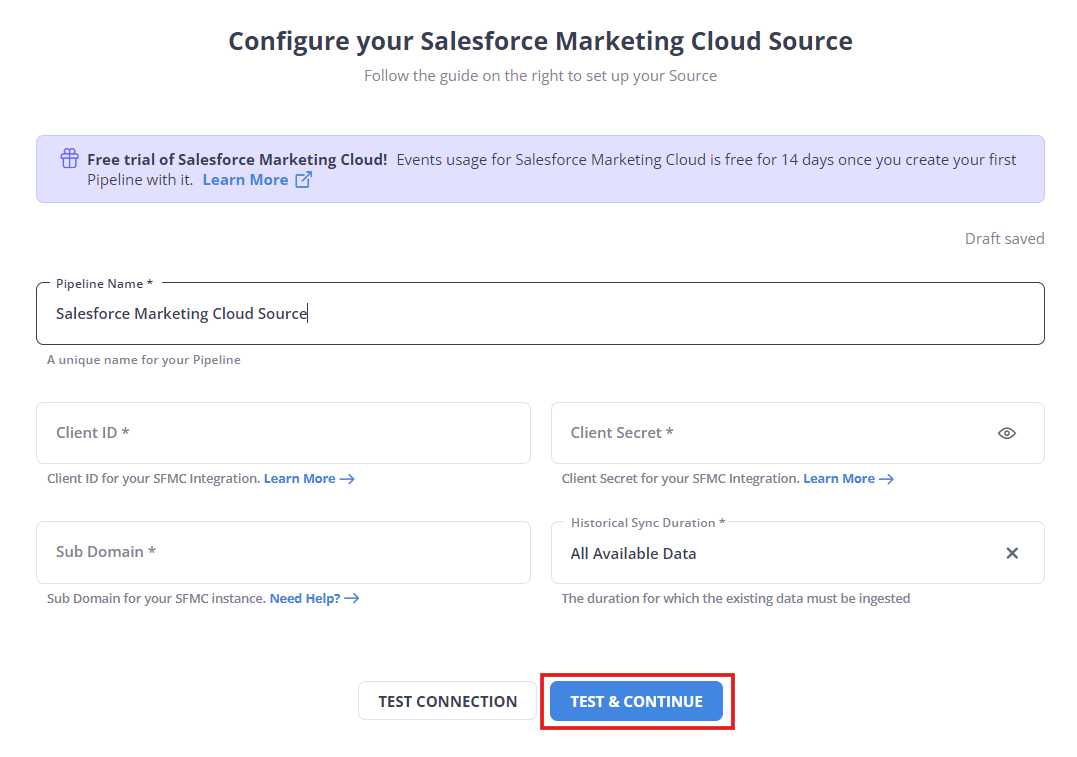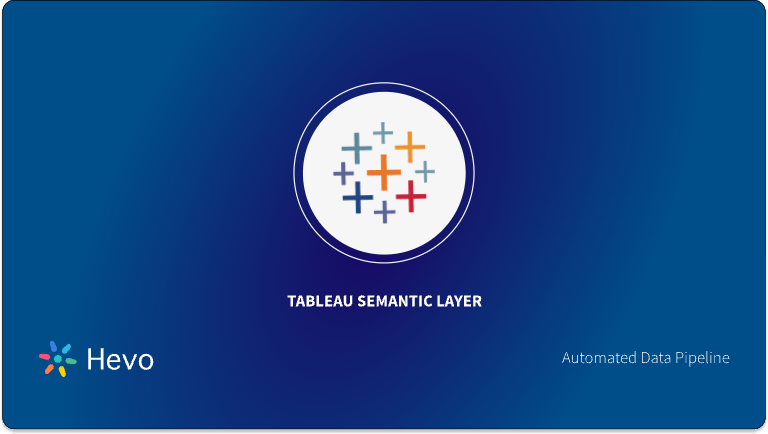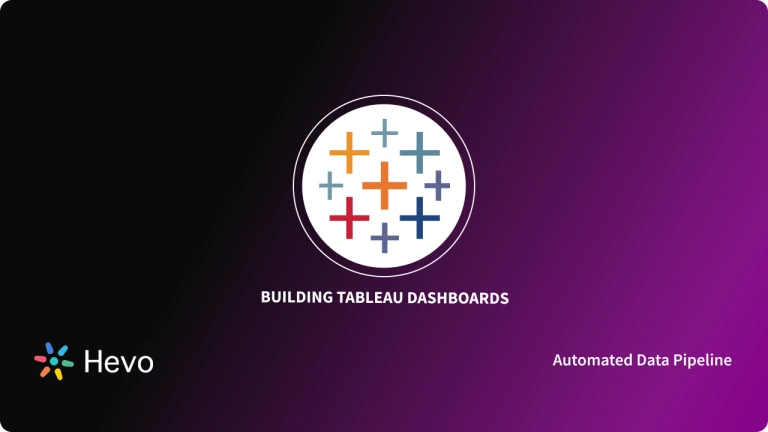Do you want to visualise your Salesforce Marketing Cloud data in Tableau? Are you finding it challenging to load your data from Salesforce Marketing Cloud to Tableau? If yes, then you’ve landed at the right page! This article aims at providing you with a step-by-step guide to help you integrate Salesforce Marketing Cloud with Tableau for a fruitful analysis of your marketing campaign performance, strategies and customer behaviour!
Upon a complete walkthrough of the content, you will be able to visualise your Salesforce Marketing Cloud data using Tableau with ease! It will help you draw crucial insights about your marketing performance and customers. You will be able to provide an enhanced personalised experience to your customers, target them better, & carry out analytics on your customers’ entire journey across numerous channels. It will help you build more engagement, build positive customer relationships and convert more prospects to loyal customers.
Table of Contents
Introduction to Salesforce Marketing Cloud
Salesforce Marketing Cloud is a robust marketing platform that allows marketers to not only monitor but also refine multi-channel experiences for customers. It houses numerous intuitive tools such as email studio, mobile studio, data studio, and many more that help marketers draw crucial insights about their customer’s journey. With Salesforce Marketing Cloud in place, marketers can provide customers with personalised experiences by interacting with them through various channels such as SMS, push notifications, emails, etc.
It helps marketers boost their customer conversion rates and reach new heights of profitability. Leveraging the in-built tools such as email studio, social studio, etc. allows marketers to increase engagement and develop strong customer relationships through customer-centric social media and email campaigns. To help marketers reach out to customer’s better across various channels at the right time, it houses an intuitive functionality known as Journey Builder, that lets marketers create fully-automated workflows to interact with the customer based on their actions on different channels.
Key Features of Salesforce Marketing Cloud:
- Customer-Relationships: With Salesforce Marketing Cloud in place, you can build a robust & profitable relationship with your customers.
- Personalised Experience: Marketers can reach out to the customer with personalised offerings through numerous channels such as social media, emails, SMS, etc. and hence provide an exceptional 360-degree experience to them.
- Analytics: With Salesforce Marketing Cloud’s in-built Einstein AI & Analytics Builder support, marketers can even create comprehensive reports and predict customer behaviour, helping them refine their strategies and target the customer better.
For further information on Salesforce Marketing Cloud, you can check the official website here.
Introduction to Tableau
Tableau is one of the most popular and robust business intelligence tools available in the market today that allows users to transform raw data from a diverse set of sources into impeccably informative visualisations, allowing users to draw data-backed actionable insights. It supports robust integration with over 80+ data sources, including CSV, Excel, Text, JSON files, etc. With Tableau’s intuitive functionalities such as real-time analysis, smooth code-free integrations, data blending, etc., users can create informative business reports and dashboards that refresh automatically in real-time.
Tableau is not only available as a desktop application but also as an online service in the form of Tableau Server, that allows teams to create, share and view critical business reports on the go, by logging into Tableau using their mobile device. It further provides a hosted-analytics offering called Tableau Online that provides them with similar functionalities along with unlimited storage support.
For further information on Tableau, you can check the official website here.
Method 1: Using Tracking Extract to Load Data from Marketing Cloud to Tableau as CSV Files
You can transfer your marketing data to Tableau using Salesforce Marketing Cloud’s Tracking Export functionality. This method requires you to set up a data extract and file transfer activity to export your marketing data through your system’s FTP tool as CSV files. You will then have to load the CSV files containing your marketing data into Tableau using its text connector functionality to visualize them.
Method 2: Using Hevo Data, a No-code Data Pipeline
Hevo Data helps you integrate data from Salesforce Marketing Cloud and numerous other marketing applications for FREE and effortlessly visualize it in real-time with your desired BI tool, such as Tableau.
Simplify your Data Analysis with Hevo today!
Get Started with Hevo for FreePrerequisites
- Working knowledge of Tableau.
- Working knowledge of Salesforce Marketing Cloud.
- A general idea about APIs.
- A general idea about FTP Tools.
- A general idea about CSV Files.
Methods to connect Marketing Cloud to Tableau
There are multiple ways in which you can transfer data from Marketing Cloud to Tableau:
- Method 1: Using Tracking Extract to Load Data from Marketing Cloud to Tableau as CSV Files
- Method 2: Using Hevo Data, a No-code Data Pipeline
Method 1: Using Tracking Extract to Load Data from Marketing Cloud to Tableau as CSV Files
With Salesforce Marketing Cloud’s tracking extract in place, you can retrieve detailed information about your email marketing campaigns based on metrics such as opens, bounces, subscribers, etc.
This method to load Data from Marketing Cloud to Tableau can be implemented using the following steps:
- Step 1: Using Automation Studio to Set Up a Data Extract Activity
- Step 2: Using Automation Studio to Set Up a File Transfer Activity
- Step 3: Setting up a New Automation
- Step 4: Using an FTP Tool to Retrieve Salesforce Marketing Cloud Data
- Step 5: Configuring Tableau’s Text Connector to Load Data from Marketing Cloud to Tableau
In case you want to use SQL queries to extract data, you can make use of data views that are going to help you retrieve information about metrics such as bounce, clicks, opens, etc. To learn more about data views and how you can use SQL queries with them, you can check the official documentation here.
Step 1: Using Automation Studio to Set Up a Data Extract Activity
To extract your Salesforce Marketing Cloud data, you will first have to set up a data extract activity in your automation studio. To do this, go to the official login website of Salesforce Marketing Cloud and log in with your credentials such as username and password.
Once you’ve logged in, go to the automation studio and click on the “Activities” tab. Now click on the “Create Activity” button, found in the top right corner. The create activity window will now open up on your screen as follows:
Click on the data extract option to start configuring your data extract.
The properties page will now open up in your screen, where you need to select the choose the “Tracking Extract” option from the extract type drop-down list and then provide a file name with a .zip extension as follows:
With the data extract properties now set up, you now need to start configuring your data extract. You can do this as follows:
- Date Range: You can select either the “Specific” or “Rolling” range option. In case you decide to go with the specific range option, you can give a maximum of 30 days, whereas, with rolling range, you can retrieve up to 90 days of data.
- Account Id: Here, you need to provide the MID of the business unit that you want to track. Salesforce Marketing Cloud will automatically use the account carrying out the extract, in case you leave this field empty.
- File Format: Here, you can select your desired type of the files in your zip extract. You can choose between CSV, Tab or XML.
You can choose the data that you want to extract by checking the checkboxes, found on the right side of your page. Once you’ve configured your data extract, you will now be able to see a summary of your data extract as follows:
This is how you can set up a data extract activity in the automation studio to transfer data from Marketing Cloud to Tableau.
Step 2: Using Automation Studio to Set Up a File Transfer Activity
With your data extract activity set up, you now need to set up a file transfer activity. To do this, go back to the “Activities” tab in the automation studio and click on the “Create Activity” option found in the top right corner. The create activity window will now open up on your screen as follows, where you need to select the file transfer activity option:
You can now start configuring your file transfer activity. To do this, begin by providing a name for your file transfer activity and selecting “Move a File From Safehouse” under the file action option.
Once you’ve set up the properties, move on to the configurations tab, where you need to provide a name for your file transfer activity with a pattern same as that of your data extract. You further need to set the destination as “ExactTarget Enhanced FTP”.
You will now be able to see a summary of your file transfer activity as follows:
You can now click on finish to complete the file transfer activity set up.
This is how you can set up a file transfer activity in the automation studio to transfer data from Marketing Cloud to Tableau.
Step 3: Setting up a New Automation
Once you’ve set up the data extract & file transfer activities for your Salesforce Marketing Cloud, you now need to set up an automation workflow that will help you extract data. To do this, click on the overview tab and click on the new automation button, found in the top right corner of your screen.
The automation workflow set up page will now open up on your screen, where you’ll be able to see the activities & the schedule option on the left side of your screen. To set up the workflow, select and drag the schedule, file transfer, and data extract activities to the canvas.
You can now schedule the extract process as per your requirement. Click on the data extract and file transfer icons and choose the activities you’ve created earlier.
Once you’ve provided all the necessary information, you’ll be able to see the health of your automation workflow as follows:
This is how you can set up an automation workflow in the automation studio to transfer data from Marketing Cloud to Tableau.
Are you tired of following a tedious setup process? Click here to check out the method of using Hevo Data that will let you load marketing data from Marketing Cloud to Tableau in an automated and hassle-free manner!
Step 4: Using an FTP Tool to Retrieve Salesforce Marketing Cloud Data
With your automation workflow now set up, your Salesforce Marketing Cloud data will now be available for access through your FTP server. To access the FTP server, you will need to download an FTP tool on your system such as SolarWinds, WinSCP, etc.
To access your data through an FTP tool of your choice, you will need to have your FTP login credentials such as username & password for Salesforce Marketing Cloud. To retrieve this data, go to the setup page in the automation studio & select the FTP accounts option, found under the data management section. The FTP accounts page will now open up on your screen, from where you need to copy your FTP credentials and URL.
Once you have all the details, launch your FTP tool such as WinSCP and enter your data to log in as follows:
You can now open the import folder of your remote site and extract your Salesforce Marketing Cloud data to your local system.
This is how you can extract data using tracking extracts to transfer data from Marketing Cloud to Tableau.
Step 5: Configuring Tableau’s Text Connector to Load Data from Marketing Cloud to Tableau
With your Salesforce Marketing Cloud data now available as CSV files on your system, you now need to import these files to your Tableau instance to start analysing your data. To import your CSV files, launch Tableau on your workstation and click on the text file open found on the panel on the left.
Once you’ve clicked on it, a new dialogue will now open up on your screen from where you can select the desired CSV file/s that you want to visualize in Tableau. Select your desired CSV file/s containing your Salesforce Marketing Cloud data and click on open.
You will now be able to view your Salesforce Marketing Cloud data in Tableau in a tabular form. Tableau will further list down all the CSV files from your data extract folder, allowing you to access the files with ease. With your data now available in Tableau, you either manually clean your CSV data or use the data interpreter option, found in the panel on the left, to automatically clean it.
To configure your file further click on your file name and click on the text file properties option. A small dialogue will now open up on your screen, where you need to provide the following information:
- Field Separator: Select the character that separates columns in the CSV file.
- Text Qualifier: Specify the text qualifier that is in use in your CSV file.
- Locale: Choose the language that parses the file. Tableau uses this to separate the numbers.
Once you’ve made all the necessary configurations in Tableau for your CSV file, you will be able to see your data as follows:
You can now start visualising your Salesforce Marketing Cloud data in Tableau.
This is how you can connect Marketing Cloud to Tableau by extracting data as CSV files using the tracking extract functionality.
Limitations of Loading Data as CSV files using the Tableau Text Connector:
- Using the tracking extract functionality allows you to retrieve up to a maximum of 90 days only. In case you want to go beyond 90 days, you will have to use data views and write custom SQL queries to extract data.
- This method requires you to have a general idea about using FTP tools and extracting data using your URL and credentials, which can be challenging for some users.
- When loading text files to Tableau, you must ensure the text file column width, as Tableau doesn’t support files with columns having more than 254 characters.
- Tableau’s custom SQL feature for text files such as CSV data loads is only available if you either have a legacy connection or have old workbooks of Tableau Desktop 8.2.
Method 2: Using Hevo Data, a No-code Data Pipeline
Step 1: After logging into your Hevo account, click CREATE PIPELINE. Search for Salesforce Marketing Cloud and enter your details, such as Client ID, Client Secret, and Sub Domain. Click on Test & Continue.

Step 2: Connect with your desired Destination; your data is now analysis-ready.
Simplify your data analysis with Hevo today! Sign up here for a 14-day free trial!
Conclusion
This article teaches you how to connect Marketing Cloud to Tableau with ease. It also provides in-depth knowledge about the concepts behind every step to help you understand and implement them efficiently. Carrying out an in-depth analysis of your marketing data requires you to integrate data from a diverse set of marketing data sources.
Integrating such diverse data can be challenging and tiresome, especially for a beginner & this is where Hevo saves the day. Hevo Data, helps you easily integrate data from multiple marketing sources and applications and visualize it in your desired BI tool.
Want to take Hevo for a spin?
Sign up for a 14-day free trial and experience the feature-rich Hevo suite first hand. You can also have a look at our unbeatable pricing that will help you choose the right plan for your business needs!
Tell us about your experience of connecting Marketing Cloud to Tableau! Share your thoughts in the comments section below!
FAQs
How do I connect Google Cloud to Tableau?
You can connect Google Cloud to Tableau by using the Google BigQuery connector in Tableau. Simply authenticate your Google Cloud account in Tableau, select the relevant BigQuery project, and import the data into Tableau for visualization.
Can you connect Salesforce to Tableau?
Yes, you can connect Salesforce to Tableau using the native Salesforce connector in Tableau. This allows you to visualize Salesforce data directly within Tableau and create reports and dashboards.
Can Tableau be used for marketing?
Yes, Tableau can be used for marketing to analyze campaigns, customer behavior, and performance metrics by visualizing data from platforms like Google Analytics, Salesforce, and social media. It helps marketers make data-driven decisions.










